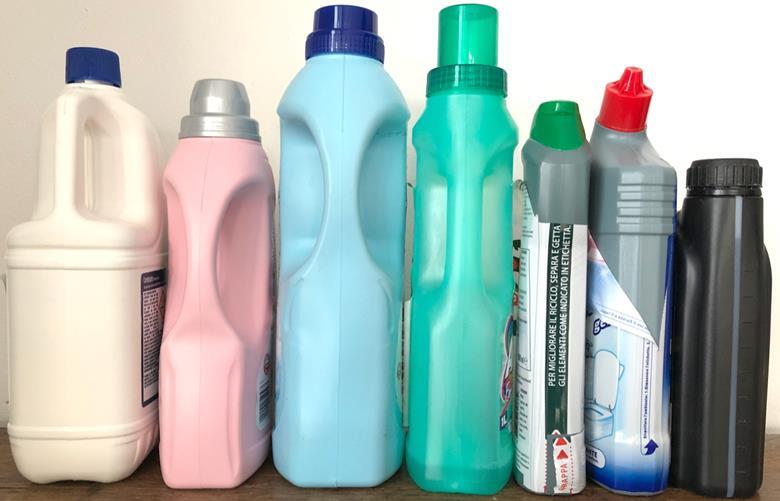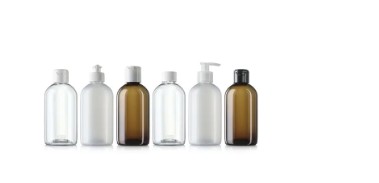In order for plastic packaging to become truly circular, it’s crucial that the sorting of post-consumer packaging is as efficient and consistent as possible. How can the industry make this happen? Professor Edward Kosior, CEO and co-founder of Nextek and NEXTLOOPP, tells us more.
Technology is a double-edged sword. Whilst we are increasingly capable of deploying innovative tech that positively shapes the future this needs to be countered with the knowledge that technology alone will not solve all our challenges. Staying ahead of the curve is, without doubt, an appealing principle but it should not blind us to simpler solutions that already exist to achieve immediate and cost-effective results.
In this instance, I am referring to the raft of novel technologies now available to sort post-consumer plastic packaging. There appears to be some confusion around which technology will deliver the best results – my advice to decision-makers is to clarify what their end goal is for the packaging they are placing on the market.
Certainly, we all agree that nothing should be produced that does not have a pre-determined, sustainable lifecycle built-in. This is simple enough, although it does require a quantum shift from the old produce, use, and discard model. With this in mind, all packaging that is being produced needs to be embedded with an effective sorting mechanism that recyclers can readily and rapidly adapt to.
Simplifying plastics recycling to make it faster, cheaper, and better
Contrary to popular belief, achieving this does not require over-sophisticated technology – recyclers do not need screeds of data to inform them of the entire life journey of the product.
First and foremost, recyclers must be able to sort packaging into single polymer fractions such as PET, HDPE, PP and LLDPE. The technology to achieve this is neither complex nor expensive, furthermore, it is plug-and-play ready and is complementary to existing NIR (Near Infrared) technology recyclers are already using. It can easily be adapted to most sorting facilities around the world to target those specific recycling streams.
The next priority is to sort these polymers into food and non-food packaging fractions. This urgently-needed step will have a considerable impact on boosting the supply of valuable recycled resins and provide an alternative to virgin plastics.
Simple sorting of plastics
So, if we are to focus on producing packaging that is truly easy and simple to recycle what is the primary area we need to address?
Pigments are possibly the most contentious yet easily reversible element of today’s packaging. Imagine defining product categories by the colour of their plastic containers instead of by a wide range of brand cues.
In this scenario, only a small range of colours would be acceptable – such as all food products contained in natural or white packaging, those brands in the non-food sector in pastel colours – thereby using smaller concentrations of pigments – and hazardous products in black plastic.
Sorting by transparent/pastel/black colouration of packaging is very simply achieved by the use of well-established, accurate and relatively low-cost automatic sorting technology using the visible light spectrum and cameras for detection.
What are the advantages of this simplification of plastics sorting?
All automatic sorting and manual sorting systems could immediately adopt this protocol globally without delay and without expensive capex or plant alteration.
The speed and yield of sorting would be boosted due to the simplicity of the sorting and the purity of food-grade packaging could be instantly assessed and quantified. Products from garden/paint/automotive applications could be instantly separated from recycling streams. Visible colours could be used to code other parameters such as Melt Flow Index.
Shedding the colours of the actual pack would reduce masterbatch costs and the design cues could be on the label (with self-peeling or dissolvable glue) or sleeves.
This simplifying scenario would rapidly result in the simple separation of food-grade plastics without expensive and complex sorting equipment and would boost recycled content levels, making high-quality recycled material more plentiful and less expensive.
And the actual brand recycling story would finally be authentic.
Simple but effective
This may sound simplistic, but this is precisely why it would work so well. Ultimately coloured plastic packaging is much harder to recycle economically than clear plastic since there is little demand for the resulting “recycling grey” that we get when we mix colours. And, it is also very easy to unscramble the colours via sorting equipment, producing a range of colour variants to suit brand owners for re-use back into new packaging.
So, this brings us back to brand designers aligning with their sustainability targets by relinquishing their need for branding by colour – in effect this change would flip the recyclability of their packaging around.
The sledgehammer and nut scenario
So where is the resistance? Why the reluctance to embrace a simple, cost-effective solution that has the potential to make a fundamental difference in our post-consumer waste crisis?
One of the biggest global challenges we face is resistance to change – because – indeed – to enable the simpler recycling procedure to rapidly scale-up, brand owners do need to make a few – simple – changes to their packaging.
The choice, of course, is theirs, but I fear that our over-reliance on technology as a cure-all is leading many to believe only a sledgehammer will crack the nut.
Busting a flawed perception
The perception that technology will enable brand owners to continue producing packaging without making any changes is fundamentally flawed. If we create multiple sub-categories of packaging in response to the belief that sorting will have the capacity to create narrower fractions of materials then the economics will diminish, issues of cross-contamination will increase, and the entire recycling sector will suffer.
Having a tsunami of data that is primarily designed to inform marketers of how their brands are performing would be overkill for recyclers who would also have to absorb the cost to re-fit their recycling plants to adopt this new and expensive technology. Brand owners too would have to invest far more in the sophisticated technology than it would cost them to make changes to their packaging.
This is one instance where, over-sophisticated, costly technology risks reducing rather than enhancing efficiency where it is most needed.
Source:







